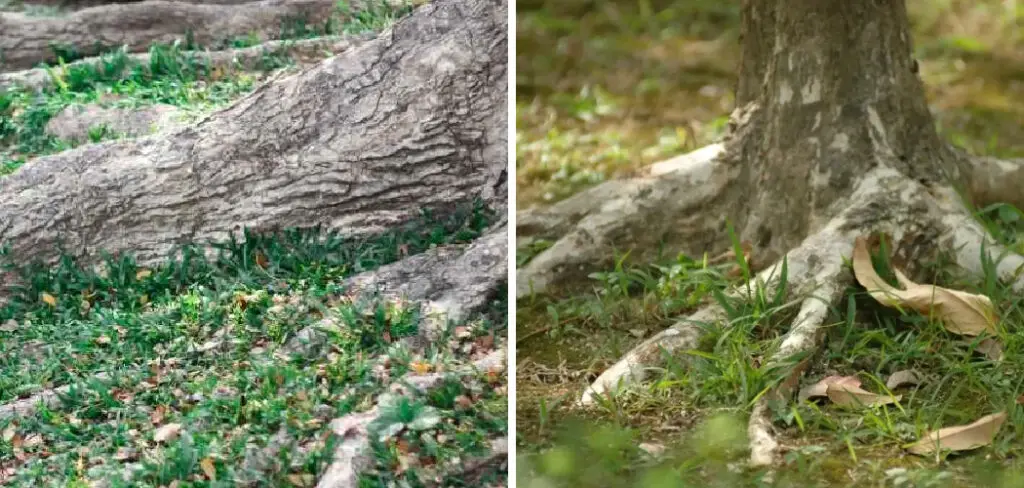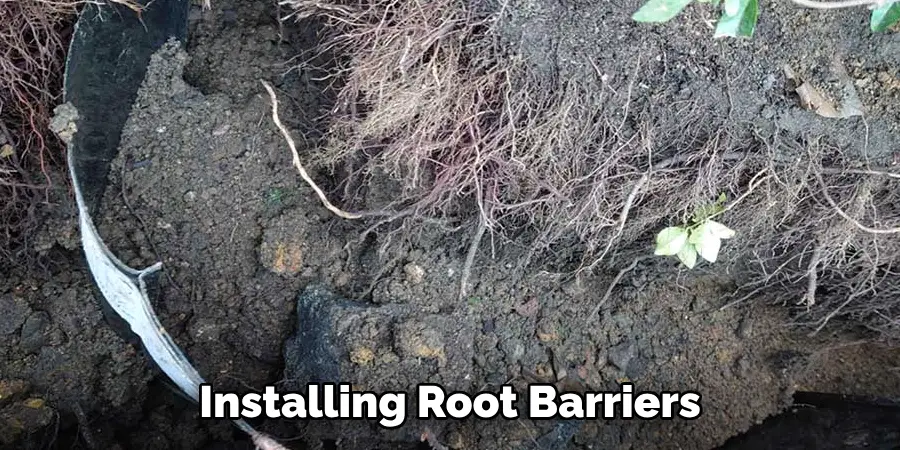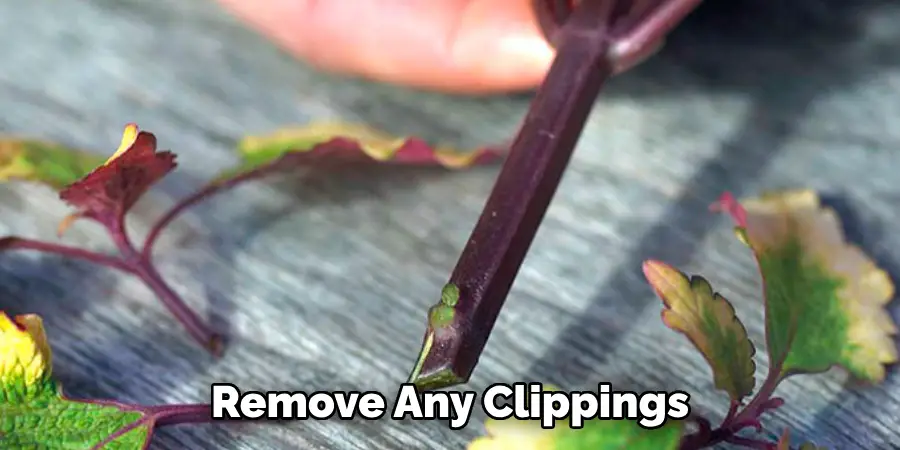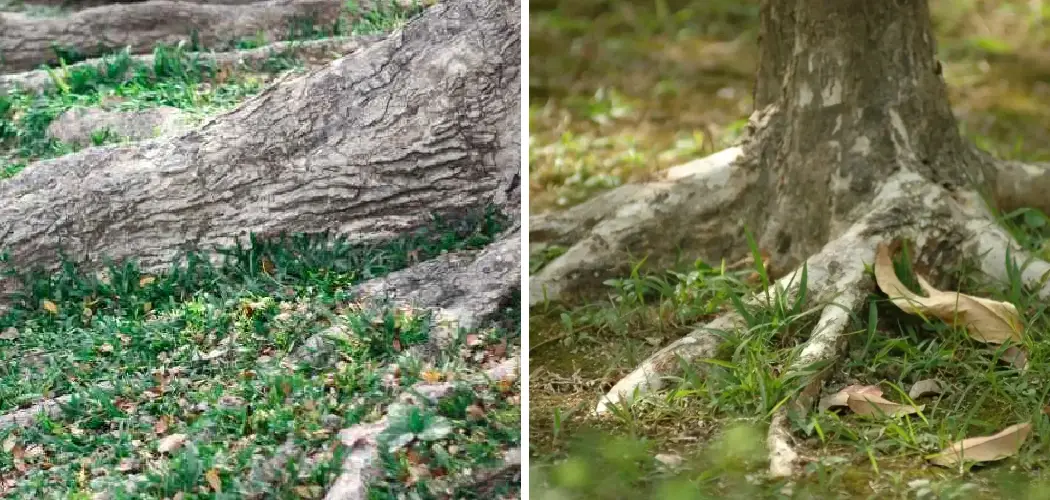Tree roots sprouting in your lawn can be a common yet frustrating issue for many homeowners. These sprouts not only disrupt the aesthetic appeal of a well-maintained yard but can also pose challenges to regular lawn care practices.

Understanding the underlying causes of tree root sprouting and exploring effective methods to address it can help you maintain a healthier, more attractive lawn. In this guide on how to stop tree roots from sprouting in lawn, we will discuss various strategies to prevent and manage unwanted tree shoots, ensuring your lawn remains lush and green.
Why Do Tree Roots Sprout in Lawn?
Tree roots can sprout in lawns due to a variety of reasons. Some of the most common causes include:
Overgrown Trees:
When trees are left unattended for extended periods, their roots naturally grow longer and expand deeper into the ground. This can result in unwanted sprouts popping up in your lawn as these roots continue to seek nutrients and moisture from the soil.
Soil Nutrient Imbalance:
If your soil lacks essential nutrients or has an imbalance of certain minerals, it can trigger tree root growth. When trees detect a nutrient deficiency, they tend to send out more roots in search of these vital elements. As a result, you may notice new shoots emerging on your lawn.
Sunlight Deprivation:
Trees that are exposed to limited sunlight often resort to growing more surface roots than usual. These shallow roots are closer to the surface and can easily spread into your lawn, causing sprouts to form.
Needed Materials
To effectively stop tree roots from sprouting in your lawn, you’ll need the following materials:
Pruning Shears or Loppers:
Essential for cutting back sprouts and roots.
Herbicide:
Select a non-toxic herbicide designed for tree root control.
Mulch or Landscape Fabric:
Helps to suppress the re-sprouting of tree roots.
Shovel:
Useful for digging and removing unwanted root sprouts.

8 Step-by-step Guidelines on How to Stop Tree Roots From Sprouting in Lawn
Step 1: Identify the Problematic Trees
The first step in addressing tree root sprouts is to identify the trees that are causing the problem. Walk around your lawn and take note of where the sprouts are most prevalent. This can help you pinpoint the specific trees whose roots are encroaching on your lawn.
Ensure you correctly identify the tree species, as different trees may require different management approaches. Pay close attention to large, mature trees, as they are often the primary culprits, but don’t overlook smaller or younger trees that might also contribute to the issue.
Step 2: Determine the Extent of Root Growth
Once you’ve identified the problematic trees, it’s time to assess the extent of root growth. Look for any visible signs of roots near or above the ground, such as cracks in pavement, raised soil areas, or sprouts emerging from your lawn. This will give you an idea of how much root pruning or removal is needed.
The best time to check for root growth is during spring when trees are actively growing. However, keep in mind that roots can also sprout at other times of the year.
Step 3: Prune Away Sprouts and Surface Roots
Using pruning shears or loppers, cut away any sprouts or surface roots emerging from your lawn. Be careful not to damage the main tree trunk or larger roots while doing so.
If you have trouble identifying which roots belong to which tree, try following the path of each shoot back to its source. Once you’ve pruned away all visible sprouts and surface roots, move on to step four.
Step 4: Apply Herbicide
To prevent regrowth, it’s essential to apply a non-toxic herbicide to the pruned areas. Follow the manufacturer’s instructions and apply the herbicide directly onto the cut surfaces of the roots.

Alternatively, you can also use a natural method by pouring boiling water on freshly cut root sprouts. This will help kill off any remaining cells and prevent regrowth.
Step 5: Cover Pruned Areas
After applying herbicide or a natural solution to the pruned root areas, it’s important to cover these spots to discourage future sprouting. Use mulch or landscape fabric to create an effective barrier. Spread a generous layer of mulch, around 3-4 inches thick, over the pruned areas to block sunlight and inhibit new shoots from emerging.
If you choose landscape fabric, cut it to fit the area and secure it firmly to prevent it from being disturbed. Covering the pruned areas will also help retain soil moisture and improve the overall health of your lawn, giving grass a better chance to thrive without competition from tree roots.
Step 6: Repeat the Process Regularly
Stopping tree roots from sprouting in your lawn may require regular maintenance, depending on the extent of root growth and how quickly trees tend to regrow. It’s important to repeat steps three to five periodically, especially during spring when trees are most active.
Continue to monitor your lawn for new sprouts and treat them promptly as they emerge. With consistent care, you can effectively prevent future root sprouting and keep your lawn looking its best.
Step 7: Consider Professional Assistance
If you have a large or complex tree root problem, it might be best to seek professional help. An arborist or tree specialist can assess the situation and provide expert pruning or removal services if needed. They may also recommend other strategies, such as installing root barriers, to prevent future sprouting.

It’s important to note that tree root control can be a challenging and time-consuming process. It may take several attempts before you see significant results, so patience is key.
Step 8: Plant Trees Away From Your Lawn
If you plan on planting new trees in your yard, consider choosing species with non-aggressive root systems or planting them further away from your lawn. This will help prevent future issues with roots sprouting in your lawn and save you the hassle of having to deal with them again.
Following these steps on how to stop tree roots from sprouting in lawn will help effectively stop tree roots from sprouting in your lawn. With regular maintenance and care, you can enjoy a beautiful and healthy lawn without the hassle of dealing with pesky root sprouts. Remember to always use safe and eco-friendly methods when managing tree roots in your yard to protect both your lawn and the environment. Happier gardening!
Additional Tips
Soil Health Monitoring:
Regularly monitor the soil health of your lawn. Healthy, well-aerated soil is less likely to suffer from aggressive root sprouts. Consider conducting a soil test to determine nutrient levels and pH balance, which can help you make informed decisions about fertilization and other soil amendments.
Water Management:
Proper watering is crucial for maintaining a healthy lawn. Overwatering can encourage root sprouting, while underwatering can weaken your grass, making it more susceptible to invasion by tree roots. Aim for deep, infrequent watering to promote strong grass root systems.
Grass Selection:
Choose grass varieties that are known for their competitive growth habits. Some grasses can outcompete tree roots for resources, effectively reducing the likelihood of root sprouting. Consult with your local garden center or extension service for recommendations suitable for your climate and soil conditions.
Mulching Practices:
When applying mulch, ensure it is spread evenly and kept away from the base of trees and grass stems to avoid stem rot. Organic mulches, such as wood chips or bark, break down over time and can improve soil structure, making it harder for tree roots to sprout.
Regular Lawn Care:
Consistent lawn care practices, including mowing, fertilizing, and aerating, can bolster the resilience of your grass against tree root intrusion. Keep your lawn mowed to a proper height and remove any clippings that could create a dense layer, impeding water and nutrient penetration.
By integrating these additional tips with the step-by-step guidelines, you can maintain a healthy and vibrant lawn while effectively managing unwanted tree root sprouts.

Frequently Asked Questions
Q1: Can Tree Roots Cause Damage to My Lawn?
A: Yes, tree roots can cause damage to your lawn by competing for nutrients and water, leading to thinning or dead patches in the grass. They can also create uneven surfaces and make it challenging to mow or walk on your lawn.
Q2: Will Pruning Tree Roots Harm the Tree?
A: Proper pruning techniques, such as those outlined in this guide, will not harm the tree. However, excessive or improper pruning can weaken the tree and make it more susceptible to disease and pests.
Q3: Can I Use Chemical Herbicides to Stop Root Sprouts?
A: Yes, chemical herbicides can be effective in preventing root sprouts. However, it’s essential to use non-toxic options and follow manufacturer instructions carefully to avoid damaging your lawn or harming the environment. Natural methods, such as boiling water or vinegar solutions, can also be used as alternatives.
Conclusion
Tree roots sprouting in lawns can be a frustrating problem for homeowners. However, by following these step-by-step guidelines on how to stop tree roots from sprouting in lawn and staying vigilant about maintenance, you can effectively stop tree root growth and keep your lawn looking healthy and green.
Remember to always use safe and environmentally friendly methods when managing tree roots in your yard, and consider seeking professional assistance for larger or more complex root issues. With patience and dedication, you can prevent future sprouting and enjoy a beautiful lawn free of pesky tree roots. Happy gardening!

